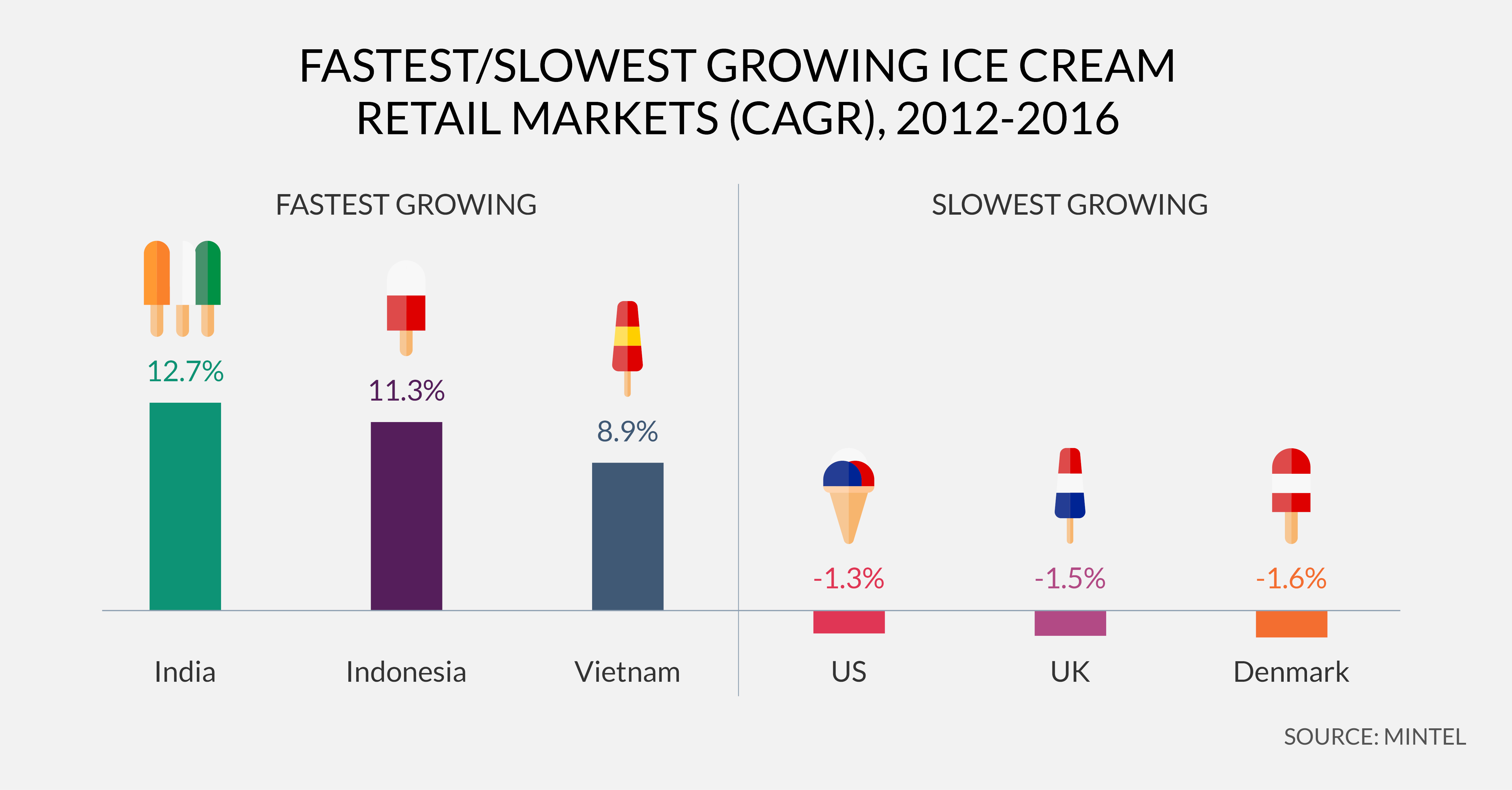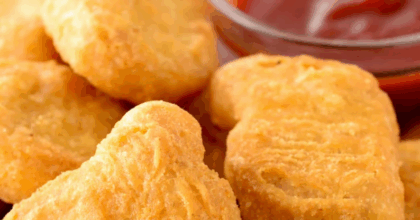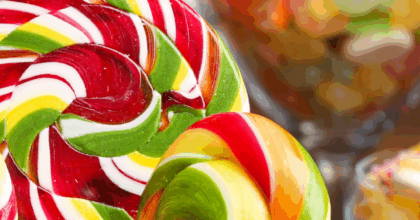Indulgence tops health for US ice cream
Whether it’s gelato, sundaes or sorbets, ice cream in all varieties has remained popular for centuries and it seems that in the US, consumers aren’t straying far from the classics even amidst their quest for a healthy lifestyle. New research from Mintel reveals that retail sales of frozen yogurt and non-dairy ice cream slipped 10 percent in the last two years, reaching an estimated $299 million in 2016. Meanwhile, the ice cream and frozen dairy desserts segment grew seven percent 2014-16 to reach an estimated $6.8 billion.
It appears that attitudes support consumers’ desire to indulge with ice cream. Only one in ten (11 percent) US consumers report cutting back on ice cream or frozen treat consumption due to health concerns. In fact, an almost equal share (10 percent) report actively avoiding healthy versions because they are “meant to be treats.” More than one quarter (27 percent) of ice cream buyers agree that, even though they find these treats unhealthy, they buy them anyway.
Despite waning interest in the US, ice cream aisles across the globe have been experiencing a dairy-free makeover as many consumers are looking to cut down on their dairy consumption. The share of global dessert and ice cream launches featuring a vegan claim has increased from two percent in 2014 to four percent in 2016, with Europe accounting for 59 percent of all launches in 2016.
“Many of the pleasures that consumers get from frozen treats, such as satisfaction of cravings and an enjoyable indulgence, simply outweigh health-related concerns for the vast majority of Americans. As a result, we’re seeing a decline in retail sales for the frozen yogurt and non-daily segment, which typically carries a health halo. Although soft-serve yogurt remains popular in specialized frozen yogurt parlors, the harder frozen yogurt packaged like ice cream continues to lose traction, indicating that even products with healthy claims need to ensure they maintain their appeal as a treat,” said Mimi Bonnett, Director, US Reports, Food, Drink and Foodservice at Mintel.
Overall, the global ice cream market is expected to scoop sales of 13 billion liters in 2016, with India, Indonesia and Vietnam among the world’s fastest growing markets. India’s ice cream market has experienced a Compound Annual Growth Rate (CAGR) of 13 percent over the past five years, with sales forecast to reach 381.8 million liters in 2017 and 657.2 million liters by 2021. On the homefront, volume sales of ice cream in the US have been stagnant, experiencing a CAGR of -1 percent over the past five years.
Currently, the US is the world’s second largest ice cream market with sales estimated at 2.7 billion liters in 2016, falling just behind China at 4.3 billion liters. However, in terms of individual ice cream consumption, Mintel research reveals that Norwegian consumers are the biggest ice cream eaters, consuming 9.8 liters per capita in 2016, followed by Australia (9.4) and Sweden (8.9). The US ranks fourth, with Americans consuming 8.4 liters per capita in 2016.
“Food historians credit China with inventing ice cream and Marco Polo for introducing it to Italy on his return from the Far East. Skip forward to the 21st century and the rate at which Western ice cream makers are looking to the East for inspiration promises to see renewed momentum,” said Alex Beckett, Global Food and Drink Analyst at Mintel. “The rapidity with which India’s ice cream market is expanding is worth noting. The low per capita consumption of retail ice cream in India demonstrates the exciting potential in what is the world’s second most populated country, although competition from street vendors should not be underestimated.”
Indeed, with the East’s love of ice cream thickening, one in three (32 percent) ice cream products were launched in Asia Pacific in 2016, up from 26 percent in 2013. What’s more, the share of ice cream products launched in North America fell from 19 percent to 14 percent in the same time period.
Clearly keen to get a scoop of the product innovation action, Western consumers are increasingly looking to try ice cream products with more Eastern inspired flavors. Nearly one third (30 percent) of Canadians would be interested in ethnically-inspired ice cream flavors, such as green tea or mango, while one quarter (23 percent) would be interested in internationally inspired formats, such as Japanese mochi ice cream or Indian kulfi.
“In the US, mochi ice cream, the Japanese treat of frozen rice dough around an ice cream filling, is set to continue growing in profile in 2017. Meanwhile, Thai-style rolled ice cream also continues to gain food press headlines across North America, often pitched as the next big thing in desserts. The Middle East also promises to become more influential for ice cream innovation. In particular, booza, a traditional type of ice cream from Syria and Lebanon, has one clear advantage which should resonate the world over: it is very slow to melt,” concluded Beckett.
Please note: the market size data referenced in this report is current as of January 31, 2017
Press copies of Mintel’s Ice Cream US 2017 report and Ice Cream Global Annual Review 2017, a well as interviews with Mimi Bonnett, Director, US Reports, Food, Drink and Foodservice, are available on request from the press office.
For the latest in consumer and industry news, top trends and market perspectives, stay tuned to Mintel News featuring commentary from Mintel’s team of global category analysts.
-
Discover your next big breakthroughGet smart fast with our exclusive market research reports, delivering the latest data, innovation, trends and strategic recommendations....View Reports
-
2026 Global PredictionsOur Predictions go beyond traditional trend analysis. Download to get the predictive intelligence and strategic framework to shape the future of your industry in 2026 and beyond. ...Download now
-
Are you after more tailored solutions to help drive Consumer Demand, Market Expansion or Innovation Strategy?Ask for a customised strategic solution from Mintel Consulting today....Find out more

































